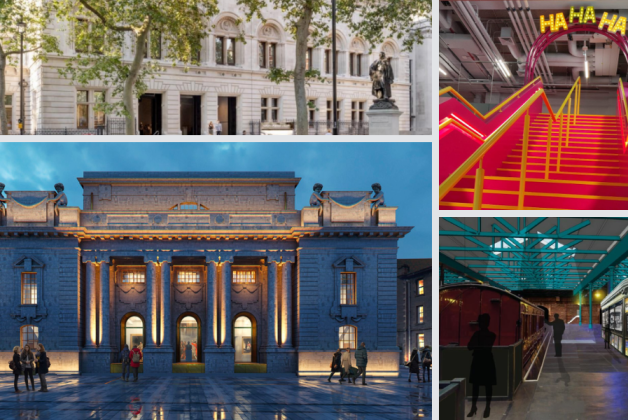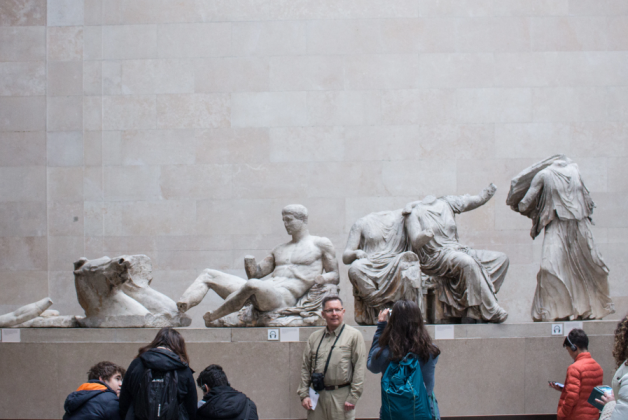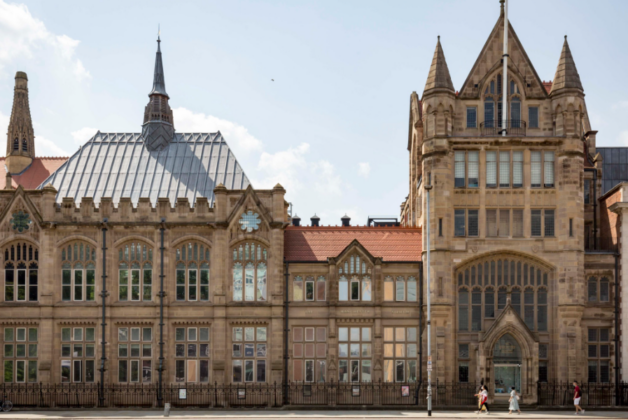As 2024 draws to a close, Advisor looks back at the largest stories: strikes win workers’ rights, Labour’s approach to funding, fit-out companies collapse, and cultural institutions welcome new leadership appointments.

Historic action: Pay deadlock causes months-long strikes at Liverpool Museums
In February, PCS Union members at National Museums Liverpool began a strike over pay that would continue for months. The organisation was forced to close several museums and galleries because of the strikes, which continued into May.
Further strike action was due to take place until June, but it was suspended after a deal was struck, ending a record of more than 60 days of action. Union members voted to accept an offer of a one-off £1,200 cost-of-living payment, two extra days’ holiday a year and a 35% discount in museum cafes. Following the deal, the museum group said it was concerned about the payout, which will be split over two years, causing it to go below the minimum reserve levels in 24/25 and 25/26.
Also taking action: In the second half of the year, members of United Voices of the World (UVW) union, who work as outsourced security guards at the Natural History Museum and Science Museum and V&A for security company Wilson James, have been on strike in a dispute over pay and conditions. As of this week, further strike action is suspended while talks continue.

‘Painful’: Labour budget warns of difficult times ahead
As the general election reached its final stretch, Advisor’s assessment of the party manifestos saw comparatively little on the culture agenda for Labour ahead of its win. In line with Keir Starmer’s warning in August that the next budget was “going to be painful”, its announcement in October saw some of the Conservative spending commitments to museums set reversal. The budget saw an increase in Grant-in-Aid, extra funding for local authority services, and the continuation of Museums and Galleries Exhibitions Tax Relief.
Seemingly not carried over was the millions of pounds committed to major museum projects across the country under the Tories. Labour was ‘minded to rethink the Tories’ Levelling Up plan to provide millions to six ‘Nationally Significant Projects’.
The V&A Dundee was the first to announce that £2.6m to support the redesign of the Scottish Design Galleries was being withdrawn. Confirmation of the funding for the other projects, which includes York’s National Railway Museum, and £10m for the National Slavery Museum, are still under review.
Elsewhere in Government: Tourism minister Sir Chris Bryant MP said last month that he would vow to increase overseas tourism, which would see an increase to the country’s museums and heritage attractions. Bryant said he plans to boost overseas visitors into the country to 50 million annually, a figure not recorded in at least two decades.
Fit-out companies fall out of business
Fit-out specialist Beck Interiors, which had a long history of work with major museums and galleries, filed notice of intention to appoint administrators in July. The company, whose work had included the fit-out of the Mammals Gallery at the Natural History Museum and the Blackpool’s new Showtown Museum, began as a traditional joinery shop in Guildford 30 years ago.
A month later, it was announced that Glasgow-based fit-out company Elmwood Projects had called in liquidators, becoming the second in the span of a few months to close its doors.The company offered commercial and office fit out and bespoke joinery alongside museums and heritage fit out. Among its most recently completed projects was the temporary exhibition ‘Great Escapes: Remarkable Second World War Captives’ at The National Archives.
By September, the first projects affected by the collapse of two fit-out companies had emerged. The opening of Leicester’s Jewry Wall Museum and Visitor Centre – which is currently undergoing a multi-million pound transformation – has been delayed, as had the reopening of Preston’s Harris Museum after a £16m revamp.

Ruffled Feathers: London Museum’s new logo divides opinion
In August, the former Museum of London revealed its new visual identity alongside its new name. Now called the London Museum, its new logo is a clay pigeon, with a glittering ‘splat’ beneath.
Sharon Ament, Director of the London Museum, said in August that the pigeon “and its splat, rendered in glitter, prompts people to reconsider London.”
“The pigeon and splat speak to a historic place full of dualities, a place where the grit and the glitter have existed side by side for millennia. We share our city with others, including millions of animals. Pigeons are all over London and so are we.”
On social media, opinions were varied. While some welcomed the bold choice, one reader email to Advisor said: “It is hard to believe how crass the new museum logo is. The Pigeon is recognized as vermin and London’s buildings are covered in spikes to prevent them landing and roosting… That it somehow reflects the grit, grime and glamour of London is ludicrous.”
Other less contentious rebrands: 2024 saw a new goal-inspired logo and strapline for the Manchester National Football Museum, a simplified logo and brand identity for the National Motor Museum, and and a heart shaped logo for Tyne & Wear Archives & Museums (TWAM), soon to be known as North East Museums.

Objects in motion: Science Museum Group expands its square footage
In October The Science Museum Group publicly opened the Hawking Building, a facility in which more than 300,000 historic objects have been studied, digitised and moved.
The new purpose-built building at the Science and Innovation Park in Wiltshire was formerly known as The National Collections Centre (NCC) during its creation, which began in 2019. This year the Science Museum Group also opened a new £8m collections building at Locomotion railway museum in County Durham, giving visitors a chance to see over 100 vehicles.
Also opening up: Perth Museum welcomed 100,000 visitors through its doors in its first three months of opening. The milestone, met less than 100 days after its reopening, means it is now more than halfway to its March 2025 target of 167,000 visitors. In October, Birmingham Museum & Art Gallery reopened. Its Co-CEO Sara Wajid told Advisor it was a “nationally significant event” to “get a museum of this scale and stature reopened to the public after such a long closure”. And at the Museum of Homelessness in London, its debut exhibition in the new space, ‘How to Survive the Apocalypse’, was seen by its first visitors in May.

Fresh faces take the cultural helm
In March The British Museum announced its new permanent Director, Dr Nicholas Cullinan OBE, who had previously served as the National Portrait Gallery’s Director since 2015.Cullinan was eventually replaced in August by Victoria Siddall, the co-founder of multiple environmentally-focussed art sector charities.
In March, Manchester’s People’s History Museum announced Clare Barlow as its new Director, joining the museum from the Foundling Museum in London, where she served as Director of Programmes and Audiences.
In April, the co-founder and director of London’s Vagina Museum stepped down from the role next month to “step back and recharge”. Last month, the museum made its Interim Director Zoe Williams its new permanent Director.
London’s Wellcome Collection announced three new senior hires to its leadership team; two Associate Directors and a Head of Access, Diversity & Inclusion began their roles in Spring.
In October, The Weald & Downland Living Museum in Chichester announced Tilly Blyth as its new Director, who had previously spent 20 years at the Science Museum, where she was Head of Collections and Principal Curator.





